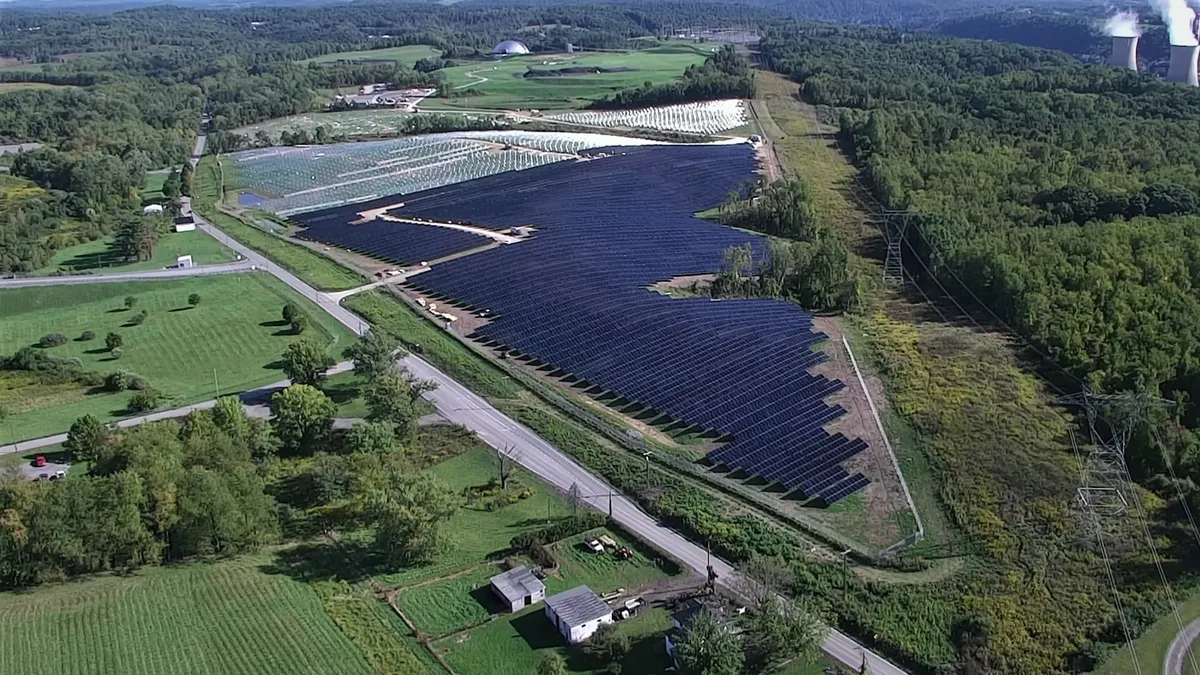Dive Brief:
-
The Federal Energy Regulatory Commission should bar Baltimore Gas & Electric, FirstEnergy, NRG Energy and other companies from receiving capacity market revenue for energy efficiency resources until they show they are eligible for it, according to a complaint filed by the PJM Interconnection’s market monitor.
-
The companies failed to provide adequate measurement and verification reports to show they were eligible for a total of $128 million in revenue for the capacity year that started June 1, Monitoring Analytics said in the complaint filed with FERC on Friday.
-
“The complete removal of [energy efficiency] from the capacity market mechanism would make it unnecessary to address the multiple outstanding issues identified in this complaint,” Monitoring Analytics said. The market monitor for several years has called for removing energy efficiency from PJM’s capacity market.
Dive Insight:
Nearly 7,480 MW of “annual equivalent unforced capacity” of energy efficiency cleared in the revised 2024/25 base residual auction at a $47.06/MW-day weighted average price, according to Monitoring Analytics’ upcoming presentation to PJM’s Market Implementation Committee.
The market monitor’s complaint comes as the committee is considering refining the qualifications for energy efficiency resources to participate in PJM’s capacity market.
In a proposal set to be discussed at a June 5 committee meeting, PJM staff said energy efficiency resources allowed to participate in the capacity market should only include efficiency measures that are bought and installed, because the efficiency revenue received from the wholesale market and given to the consumer caused the purchase and installation.
Meanwhile, FERC should direct PJM and the market monitor to investigate whether the energy efficiency payments related to the last capacity auction should be made, according to Monitoring Analytics’ complaint.
Under PJM’s rules, an energy efficiency resource must be a project that involves installing more efficient devices or equipment, or implementing more efficient processes or systems that leads to a permanent, continuous reduction in electric use, according to the market monitor.
However, the energy efficiency sellers listed in the complaint — including CPower Energy, Exelon, Public Service Electric & Gas, Rockland Electric and Southern Maryland Electric Cooperative — base their claims to capacity revenue largely on energy efficiency product sales data from retail chains, Monitoring Analytics said.
“Indicated Energy Efficiency Sellers add up these retail receipts and, without contracts that support a claim of ownership, submit them for subsidy payments as [energy efficiency] MW in the PJM capacity construct,” the market monitor said.
There is no way to track what energy efficiency seller in the capacity market is directly responsible for which product sale because of overlapping product and utility service territories, according to Monitoring Analytics.
Also, because there is no direct contractual relationship between the energy efficiency capacity market seller and the end use customer, the sellers cannot provide information about whether, when or where the energy efficiency products are installed, the market monitor said.
“[Energy efficiency] providers fail to demonstrate that midstream and upstream programs cause any reductions in energy consumption or behavior by end use customers; lack any contractual relationship with end-use customers; and fail to establish legal rights to the capacity value required to be eligible to receive capacity payments from PJM,” Monitoring Analytics said. “There is no evidence that [energy efficiency] participation in PJM markets causes end use customers to reduce their energy consumption beyond what they would have otherwise.”














